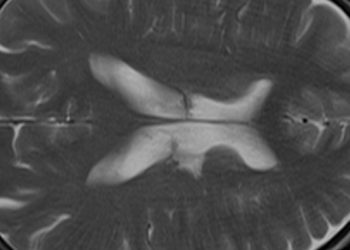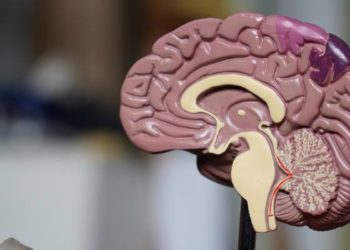Type 1 diabetes associated with higher brain ages and poorer cognitive performance
1. In this cohort study, individuals with Type 1 diabetes (T1D) had consistently higher brain age values than their non-diabetic counterparts, averaging to approximately 6 years older, and were additionally observed to score lower on measures of cognitive performance for psychomotor and mental efficiency.
2. Alzheimer’s Disease (AD) related atrophy and neurodegeneration were comparable between the two groups when measured by magnetic resonance imaging (MRI).
Evidence Rating Level: 2 (Good)
The literature has established some modest structural and functional changes that occur in the brains of those with T1D, including declines in memory performance, mental efficiency tests, and smaller gray matter volumes. Using MRI-derived signatures and novel machine learning methods to identify spatial patterns of brain atrophy, researchers are now able to differentiate brain aging from neurodegenerative processes. In this cohort study, 416 participants with T1D from the Epidemiology of Diabetes Interventions and Complications (EDIC) study (median diabetes duration 37 years) agreed to take part in this ancillary study, as did 99 controls without T1D. Cognitive protocols included a battery of psychomotor, mental efficiency, immediate recall, and delayed recall tests which are sensitive in detecting normal aging versus mild cognitive impairment. Across the entire actual age range, EDIC participants had consistently higher predicted age values compared to controls, who showed no evidence of premature brain aging. However, there was no greater atrophy in regions typically affected in AD. Brain regions most affected by atrophy in EDIC participants included the putamen, thalamus, superior frontal gyrus, middle frontal gyrus, and superior temporal gyrus. Among EDIC participants, greater brain aging was associated with lower psychomotor and mental efficiency (P < .001). The results of this study support the hypothesis that morphology of the brain is associated with accelerated aging in those with a longstanding history of T1D. Based on this study, T1D is not associated with significantly decreased brain reserve in regions that are susceptible to AD-related neurodegeneration at this age. A potential weakness of the study is the lack of generalizability of results due to racial homogeneity of the study population (predominantly non-Hispanic White), as well as a mean age of 60, which is younger than the typical emergence of AD-related symptoms. Patients in the control group also differed significantly from the EDIC group in higher educational attainment (P = .02), which could have potentially confounded potential results related to brain atrophy and aging. This study should be repeated where possible in diverse and older populations to explicate the results further. Nonetheless, findings suggest an association between advanced brain age as well as cognitive decline with Type 1 diabetes, possibly representing an underrecognized risk factor in the development of early dementia.
Click to read the study in JAMA Network Open
Image: PD
©2023 2 Minute Medicine, Inc. All rights reserved. No works may be reproduced without expressed written consent from 2 Minute Medicine, Inc. Inquire about licensing here. No article should be construed as medical advice and is not intended as such by the authors or by 2 Minute Medicine, Inc.







